In the vast tapestry of the natural world, some creatures capture our imagination with their mystique, while others, through misunderstanding, become subjects of unwarranted fear. The Hobo Spider, scientifically known as Eratigena agrestis, is one such fascinating arachnid that has long been at the center of both scientific curiosity and public debate. Often misidentified and frequently misunderstood, this funnel-web weaver plays a unique role in its ecosystem and offers a compelling study for anyone interested in the intricate lives of spiders.
This article aims to unravel the true story of the Hobo Spider, separating fact from fiction and providing a comprehensive guide to its biology, behavior, and interaction with the world around it. From its humble origins to its current distribution, and from its hunting prowess to its reproductive strategies, prepare to embark on a journey into the often-overlooked world of this remarkable eight-legged resident.
Meet the Hobo Spider: An Introduction
The Hobo Spider, Eratigena agrestis, belongs to the family Agelenidae, commonly known as funnel-web spiders due to the distinctive shape of their webs. These spiders are native to Western Europe but have successfully established populations in the Pacific Northwest of North America, particularly in states like Washington, Oregon, Idaho, and parts of British Columbia. They are medium-sized spiders, typically ranging from 11 to 15 millimeters in body length, with females generally being larger than males.
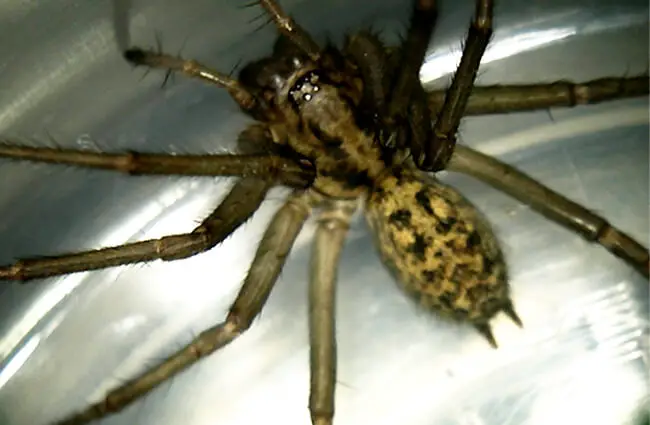
Identifying a Hobo Spider can be challenging, even for experts, as they share many physical characteristics with other common house spiders. Key features include a brown body, often with a distinct pattern of lighter chevrons or V-shapes on the abdomen, though this pattern can be faint or absent. Their legs are typically uniform in color, lacking the dark bands found on many other spiders. Unlike some of their more visually striking relatives, Hobo Spiders are not particularly hairy or spiny. A crucial identification feature, often requiring magnification, is the arrangement of their eight eyes in two straight rows.

Habitat and Distribution: Where the Hobo Spider Roams
Originally hailing from the grasslands and forests of Western Europe, the Hobo Spider made its way to North America likely through shipping containers in the early 20th century. Its name, “Hobo,” is thought to reflect its tendency to travel and spread. In its native range, it prefers open, undisturbed areas, but in North America, it has adapted remarkably well to human-modified environments.
Preferred Environments:
- Outdoor Habitats: Hobo Spiders thrive in areas with dense vegetation, tall grasses, rock piles, and under logs. They are particularly fond of gardens, woodpiles, and neglected corners of yards. Their funnel webs are often constructed in crevices or depressions, providing a sheltered retreat.
- Indoor Habitats: As autumn approaches and temperatures drop, male Hobo Spiders, driven by the urge to mate, often venture indoors. They seek shelter in basements, crawl spaces, garages, and ground-level rooms, often found near foundations, window wells, and cluttered areas.
Geographic Spread:
The primary North American range of the Hobo Spider is concentrated in the Pacific Northwest, including:
- Washington
- Oregon
- Idaho
- Parts of British Columbia, Canada
- Isolated populations have also been reported in other western states, suggesting a slow but steady expansion.
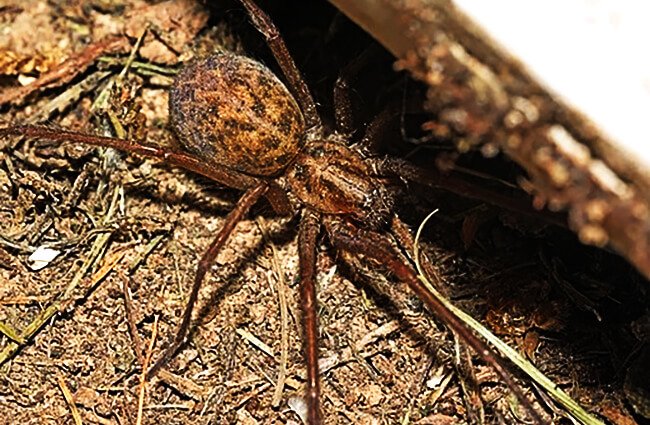
The Hunter’s Lair: Diet and Hunting Strategy
Hobo Spiders are ambush predators, relying on their distinctive funnel webs to capture prey. Their diet primarily consists of insects and other small arthropods that wander into their silken traps.
The Funnel Web:
The web of a Hobo Spider is a marvel of engineering. It is a flat, sheet-like web with a funnel-shaped retreat at one end. The spider typically waits inside this funnel, sensing vibrations from potential prey that stumble onto the sheet. The web is not sticky like those of orb-weavers, but rather a tangled mess of silk that ensnares prey, making escape difficult.
- Construction: Webs are often built in sheltered locations, such as between rocks, under leaf litter, or in the corners of buildings.
- Detection: Specialized hairs on the spider’s legs and body are highly sensitive to vibrations, allowing it to detect even the slightest movement on its web.
- Attack: Once prey is detected, the Hobo Spider rapidly darts out of its funnel, overwhelms the victim, injects venom to immobilize it, and then drags it back into the funnel to consume.
Typical Prey:
- Crickets
- Grasshoppers
- Beetles
- Ants
- Other small spiders
By preying on these common insects, Hobo Spiders contribute to natural pest control within their ecosystems, helping to regulate insect populations.
Life’s Journey: Mating and Reproduction
The life cycle of a Hobo Spider is a fascinating display of instinct and survival, culminating in the crucial act of reproduction.
Mating Season:
Mating typically occurs in late summer and early autumn. This is the time when male Hobo Spiders become particularly active, abandoning their webs in search of females. Their wanderings often lead them into human dwellings, which is why they are more commonly encountered indoors during this period.
The Mating Process:
- Male’s Quest: A male Hobo Spider will follow pheromone trails left by a female to locate her web.
- Courtship: Upon reaching a female’s web, the male engages in a delicate courtship ritual, involving leg tapping and body vibrations, to signal his intentions and prevent being mistaken for prey.
- Copulation: If the female is receptive, the male will transfer sperm using his pedipalps, specialized appendages near his mouth.
Egg Sacs and Spiderlings:
After mating, the female constructs several egg sacs, each containing dozens to hundreds of eggs. These sacs are typically hidden in secluded, protected locations within her web or nearby vegetation. The female guards these sacs diligently until the spiderlings hatch. The young spiderlings disperse shortly after hatching, often by ballooning, a process where they release silk threads into the wind to catch air currents and travel to new locations. This dispersal mechanism is vital for the species’ spread and colonization of new territories.
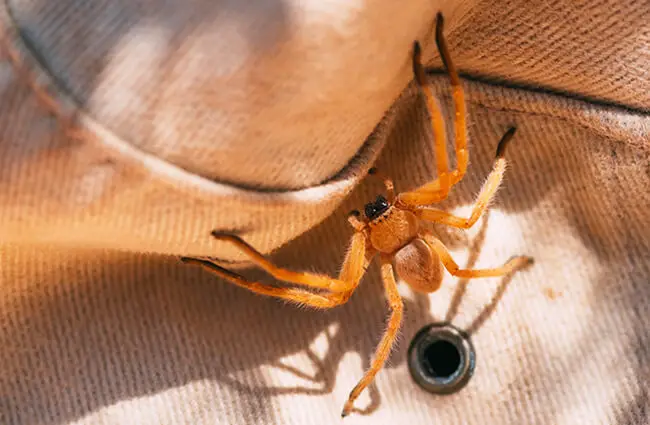
Evolutionary Journey: A Tale of Adaptation
The evolutionary history of the Hobo Spider, like many arachnids, is rooted deep in the ancient past. As a member of the Agelenidae family, its lineage traces back millions of years, evolving alongside other funnel-web spiders. Its success as a species can be attributed to several key adaptations:
- Efficient Funnel Web: The non-sticky, sheet-like web with a retreat is highly effective for capturing ground-dwelling insects, a niche that has remained stable over evolutionary time.
- Cryptic Coloration: Their brown and tan coloration provides excellent camouflage in their natural habitats of leaf litter, soil, and vegetation, allowing them to ambush prey and avoid predators.
- Reproductive Strategy: Producing multiple egg sacs with numerous offspring ensures a high survival rate, even with natural predation pressures.
- Adaptability: The Hobo Spider’s ability to thrive in a variety of habitats, from natural grasslands to urban environments, highlights its robust adaptive capacity, particularly evident in its successful colonization of North America.
Their journey from European grasslands to becoming a common resident in North American homes is a testament to their resilience and ability to exploit new opportunities, a classic example of an invasive species successfully establishing itself.
Ecosystem Contributions and Interactions
Every creature, no matter how small, plays a role in the intricate web of life. The Hobo Spider is no exception, contributing to its ecosystem in several ways.
Role as a Predator:
As mentioned, Hobo Spiders are insectivores, primarily preying on a variety of small arthropods. By consuming these insects, they help regulate their populations, preventing potential outbreaks and maintaining ecological balance. This makes them a natural form of pest control in gardens and agricultural settings.
Prey for Other Animals:
Despite their predatory nature, Hobo Spiders themselves are a food source for other animals. Their predators include:
- Birds: Many bird species will opportunistically feed on spiders.
- Lizards and Amphibians: Ground-dwelling reptiles and amphibians often include spiders in their diet.
- Other Spiders: Larger, more aggressive spider species may prey on Hobo Spiders.
- Parasitic Wasps: Certain species of wasps are known to parasitize spiders or their egg sacs.
Competition:
In their introduced range, Hobo Spiders may compete with native funnel-web spiders and other ground-dwelling arachnids for resources and web-building sites. The extent of this competition and its impact on native populations is an ongoing area of ecological study.

Hobo Spiders and Humans: Dispelling Myths and Fostering Coexistence
The interaction between Hobo Spiders and humans has been fraught with misunderstanding, largely due to past misattributions of severe necrotic bites. It is crucial to approach this topic with current scientific understanding.
The Bite Controversy:
For many years, the Hobo Spider was implicated in causing necrotic lesions, similar to those attributed to the Brown Recluse Spider. However, extensive research and re-evaluation of medical cases have largely discredited this claim. The venom of the Hobo Spider, while potent enough to subdue its insect prey, is generally not considered medically significant to humans. Most reported bites result in mild, localized pain, redness, and swelling, similar to a bee sting. Severe reactions are rare and often attributable to secondary infections or misdiagnosis of other conditions, such as bacterial infections or other spider bites.
Important Note: While the severity of Hobo Spider bites has been largely debunked, any suspected spider bite that causes concern, especially if symptoms worsen or spread, should be examined by a medical professional.
Encountering a Hobo Spider in the Wild or Home:
For hikers, animal lovers, or anyone encountering a Hobo Spider, a calm and respectful approach is best.
- Identification: Be aware that many spiders look similar. Unless you are an expert, positive identification can be difficult. Assume any funnel-web spider is a Hobo Spider if in its known range, but do not panic.
- Avoidance: Hobo Spiders are not aggressive and will only bite if they feel threatened or are accidentally pressed against skin. Avoid reaching into dark, undisturbed areas like woodpiles, dense vegetation, or cluttered corners without gloves.
- What to Do if Encountered:
- Outdoors: Simply observe from a distance. The spider is likely more afraid of you.
- Indoors: If you find one in your home, gently capture it using a cup and a piece of paper, then release it outdoors away from the house. Avoid crushing it, as this can lead to defensive biting.
- If Bitten:
- Clean the bite area with soap and water.
- Apply a cold compress to reduce swelling.
- Over-the-counter pain relievers can help with discomfort.
- Monitor the bite site. If symptoms are severe, spread, or you develop signs of infection, seek medical attention.
Contribution to Human Culture (Perception and Science):
While Hobo Spiders do not feature in ancient myths or folklore, their presence in human environments has certainly shaped our modern perception of spiders. They have become a focal point in discussions about invasive species, public health scares, and the challenges of accurate scientific communication. Their story serves as a powerful example of how scientific understanding evolves and how initial fears can be gradually replaced by evidence-based knowledge. For researchers, they offer a valuable model for studying spider behavior, venom composition, and ecological adaptation.
Caring for Hobo Spiders in Captivity: A Zookeeper’s Guide
For aspiring zoologists or zookeepers tasked with caring for a Hobo Spider, understanding its specific needs is paramount to ensuring its well-being and providing opportunities for study.
Enclosure Setup:
- Type: A small to medium-sized terrarium or plastic container with adequate ventilation is suitable. The enclosure should be wider than it is tall to accommodate the sheet web.
- Substrate: A layer of peat moss, coco fiber, or chemical-free soil, about 2-3 inches deep, will help maintain humidity and provide a natural base.
- Web Anchors: Provide plenty of anchor points for web construction, such as small branches, cork bark, or artificial plants. A corner or a crevice should be available for the funnel retreat.
- Water: A small, shallow water dish with cotton or a sponge to prevent drowning is essential. Alternatively, misting one corner of the enclosure a few times a week can provide hydration.
- Temperature and Humidity: Maintain room temperature (around 68-78°F or 20-26°C). Humidity should be moderate, mimicking their natural outdoor environment, around 60-70%.
Feeding:
- Diet: Offer appropriately sized live insects, such as crickets, mealworms, or small roaches.
- Frequency: Feed once or twice a week. Observe the spider’s abdomen; a plump abdomen indicates it is well-fed.
- Prey Removal: Remove any uneaten prey after 24 hours to prevent it from stressing the spider or introducing mold.
Maintenance and Handling:
- Cleaning: Spot clean as needed, removing uneaten prey and waste. A full substrate change may be required every few months.
- Handling: Hobo Spiders are not pets and should not be handled. They are fast and can bite defensively. Use long forceps or a catch cup for any necessary manipulation within the enclosure.
- Avoid:
- Over-handling or stressing the spider.
- Using harsh chemicals for cleaning.
- Placing the enclosure in direct sunlight or near heat sources that could cause overheating.
- Housing multiple Hobo Spiders together, as they are solitary and may cannibalize each other.
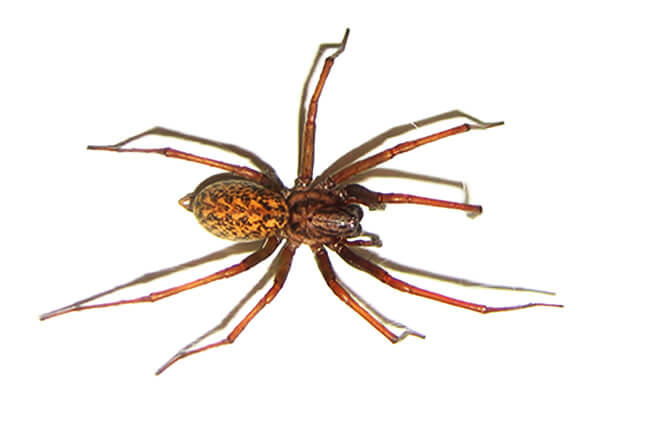
Fascinating Facts About the Hobo Spider
- Speed Demons: Hobo Spiders are incredibly fast runners, especially when darting out of their funnel to catch prey or escape danger.
- Poor Climbers: Unlike many spiders, Hobo Spiders are not adept climbers. They prefer to stay on the ground or low vegetation, which is why their webs are typically found at ground level.
- Nocturnal Hunters: While they may be active during the day, Hobo Spiders are primarily nocturnal, doing most of their hunting and web maintenance under the cover of darkness.
- Longevity: Females can live for two to three years in ideal conditions, while males typically live for only about a year, often dying shortly after mating.
- Misidentification Mania: Due to their plain appearance, Hobo Spiders are frequently confused with other common household spiders, leading to widespread misidentification and contributing to their undeserved reputation.
- Scientific Name Evolution: The Hobo Spider was originally classified as Tegenaria agrestis. However, taxonomic revisions based on genetic and morphological studies led to its reclassification into the genus Eratigena.
Conclusion: A Spider Worth Understanding
The Hobo Spider, Eratigena agrestis, is far more than just a brown spider with a controversial past. It is a testament to nature’s adaptability, a skilled architect of funnel webs, and an integral part of its ecosystem. By shedding light on its true nature, we can move beyond unfounded fears and appreciate this arachnid for what it truly is: a fascinating creature with a compelling life story.
Whether you are a student researching its habitat, an animal lover hoping to spot one in its natural environment, an aspiring zoologist delving into its biology, a hiker encountering it on a trail, or a zookeeper providing care, understanding the Hobo Spider enriches our appreciation for the diverse and often surprising world of invertebrates. Let us continue to observe, learn, and coexist with these remarkable eight-legged inhabitants of our shared planet.

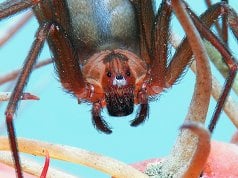
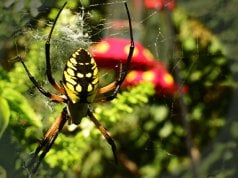


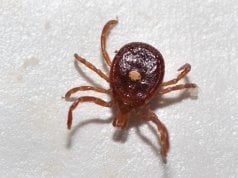
![Red Angus Closeup of a beautiful Red Angus cowPhoto by: U.S. Department of Agriculture [pubic domain]https://creativecommons.org/licenses/by/2.0/](https://animals.net/wp-content/uploads/2020/03/Red-Angus-4-100x75.jpg)

